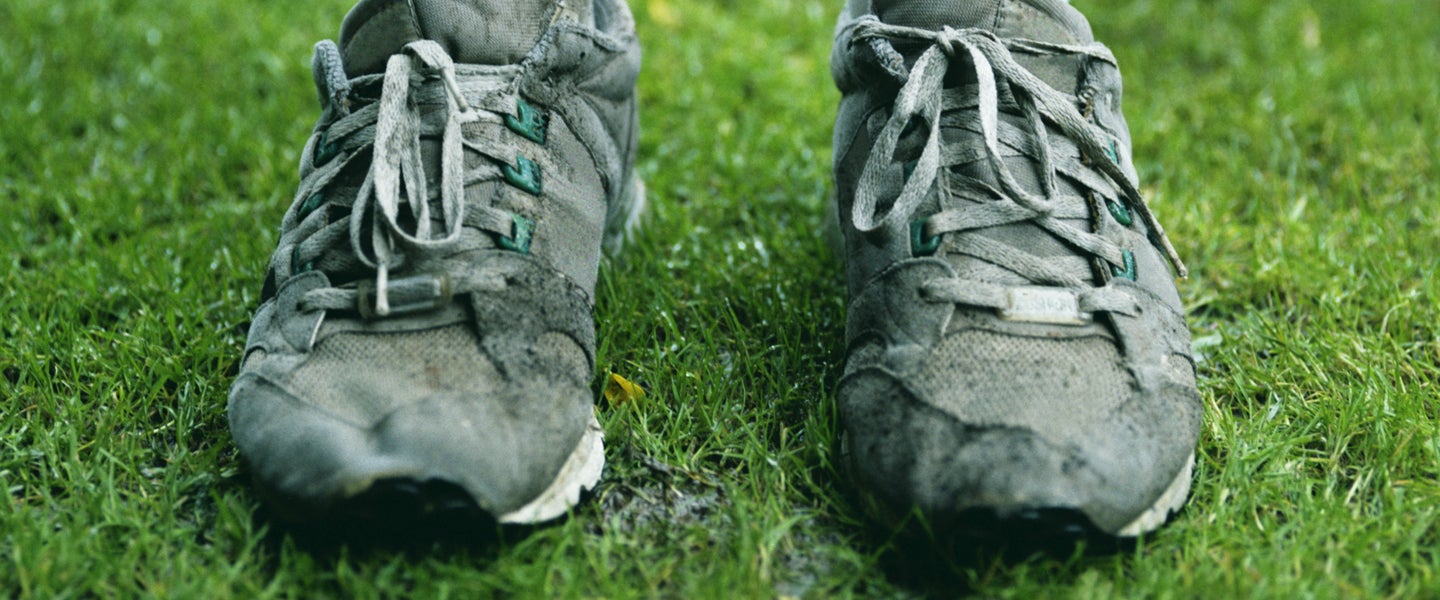Last summer, I Marie Kondo’d pretty much my entire wardrobe. I’d been working from home, so if it wasn’t the same sweatshirt and jeans I wore pretty much six days a week, it didn’t spark joy. What did spark joy, however, were the three pairs of running shoes that remain in my closet to this day. I love them too much to part ways, let alone throw them away. They deserve so much more than that.
At the same time, they’re taking up space in my tiny apartment, particularly as I slowly rebuild my wardrobe beyond the aforementioned sweatshirt and jeans. So what can I do with them that will both spark joy and get them out of my place?
According to Paul Ronto of RunRepeat.com, sentimentality causes a lot of runners to hold onto their shoes for too long. “On one hand, you want you to keep your shoes as long as possible, but running in a pair past their useful life is dangerous,” he tells me. The average running shoe should be swapped out every 300 to 500 miles “depending on the shoe and your abuse of them,” which means if you’re running 20 miles a week, you should get new ones every six months.
Beyond mileage, there are some telltale physical signs of wear, too. “Any time you wear through the outsole, or the grippy rubber on the bottom, and you can see some of the softer midsole, it’s time to get a new pair,” Ronto tells me. “Or if there is uneven wear, it means your gait is off, and you can wear your shoes down unevenly.”
I can definitely attest to this. I’m not sure what’s going to blow out first — the laces in my running shoes or the tendons in my knee — but I can’t bring myself to buy new shoes, even though my current pair crossed the 500-mile mark long ago and look pretty rough.

When I do part with them, though, there’s at least a plan — they’ll humbly transform into my gettin’ around shoes (ticketed for walks, hikes and mowing the lawn). I can’t say the same for the three other pairs in my closet, which are too far gone even for these menial tasks.
So again, what am I to do with them?
Per Ronto, there are plenty of great options, all of which are infinitely better than trashing them. In fact, depending on where you live, there might be a donation program specifically for old running shoes. For example, Ronto says in Boulder there’s a place called One World Running “that takes old shoes and repurposes them by donating them to runners in need around the world.”
If you can’t find a local shop, try shoe stores that partner with shoe-collecting services like Sneakers4Funds, Soles4Souls and TerraCycle. Admittedly, they’re geared more toward running clubs and basketball teams looking to donate, which they then repurpose in bulk, but retail shops can partner with them as well.
There’s also always Goodwill. “There’s usually still life in old running shoes even if they’re not ideal to run in, so we [at RunRepeat] urge everyone to recycle their old shoes rather than sending them to the landfill,” Ronto says.
Even if your shoes are totally destroyed and unrunnable, there’s still a better home for them than the landfill: Nike’s “Grind” program, or as Ronto calls it, the “the proverbial glue factory.”
Back in the 1990s, Nike began a “reuse-a-shoe” program, and has collected roughly 1.5 million shoes annually since. So as long as you live near a Nike Store, you can leave your running shoes there (regardless of brand), and they’ll recycle them into materials for tracks, basketball courts, walking paths and turf.
Just be gentle the next time you’re out for a run — because that pavement you’re pounding might very well be the final resting place of your beloved old gym shoes.

